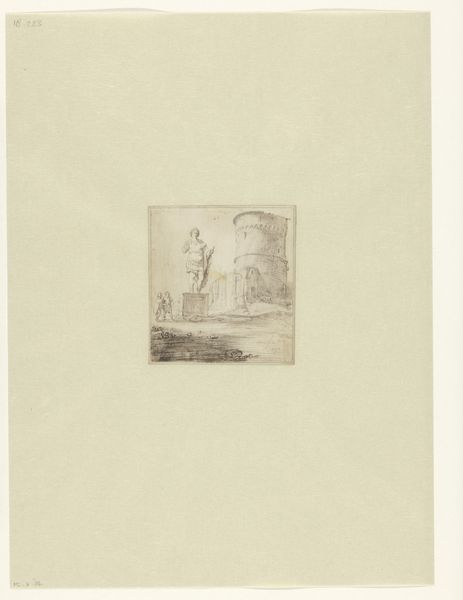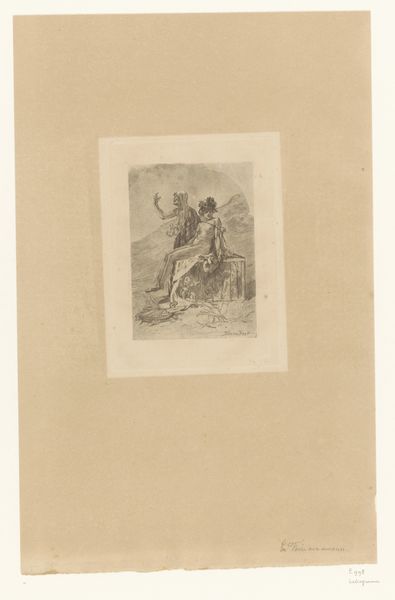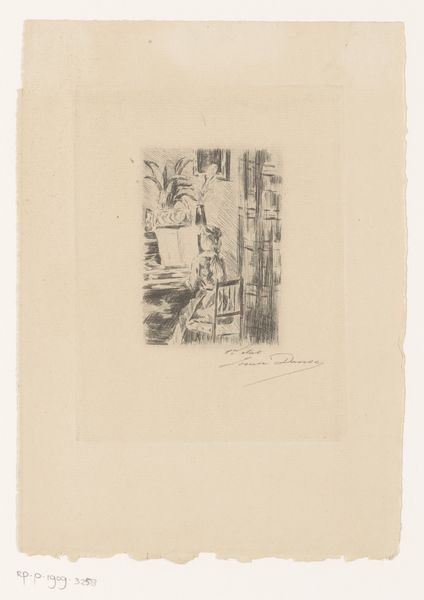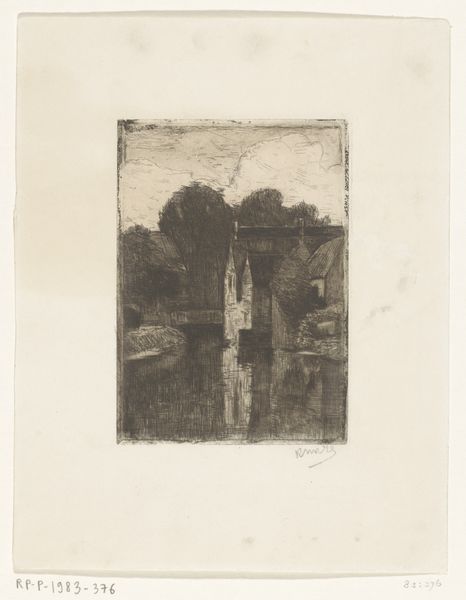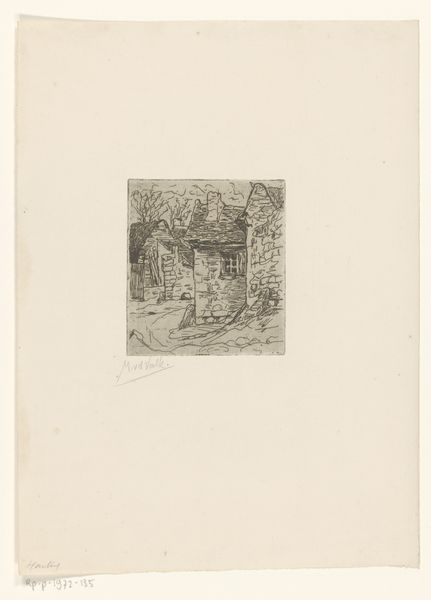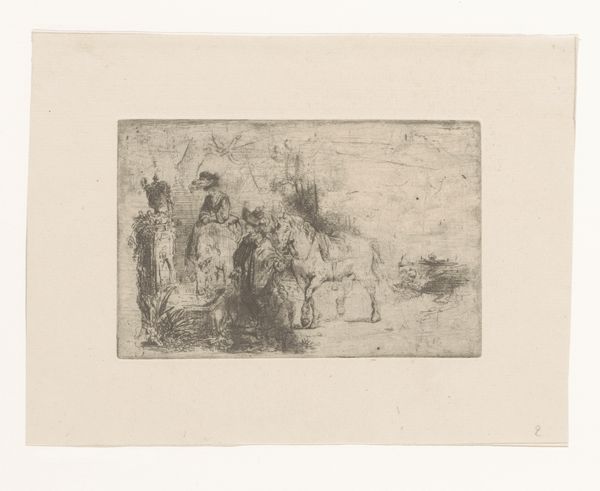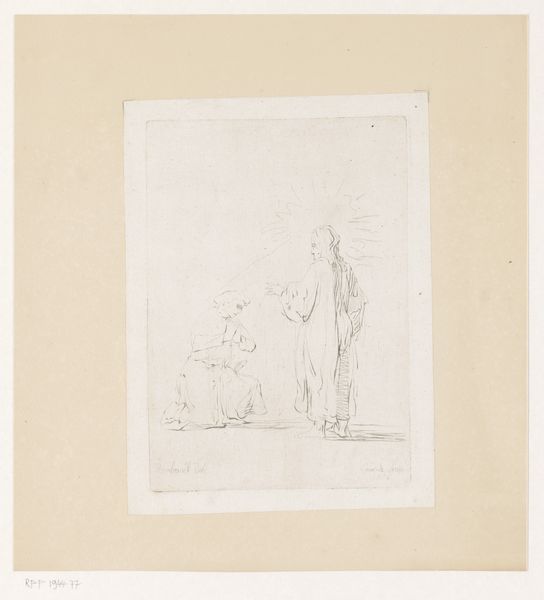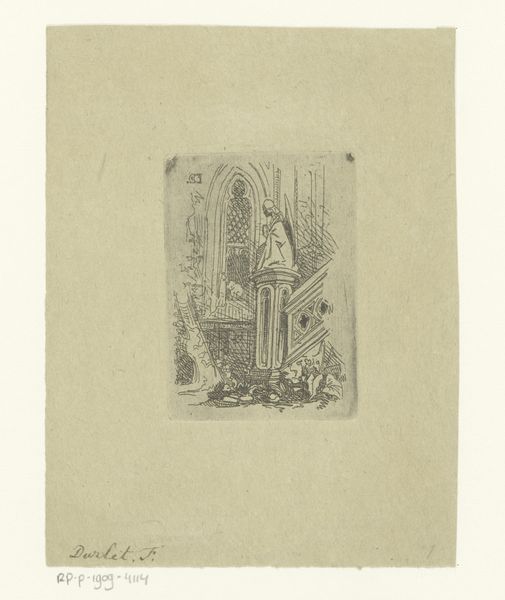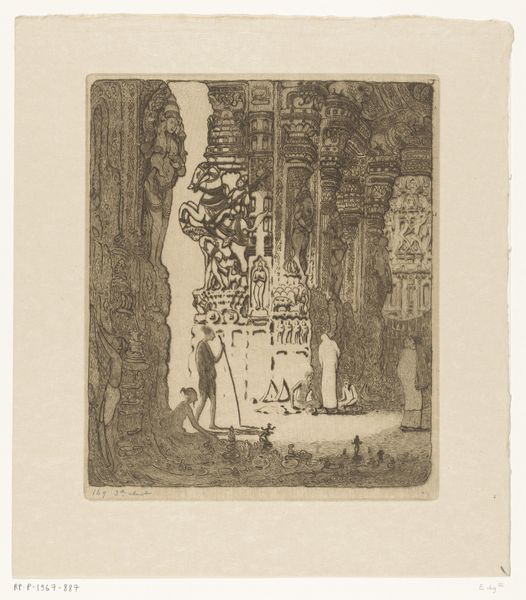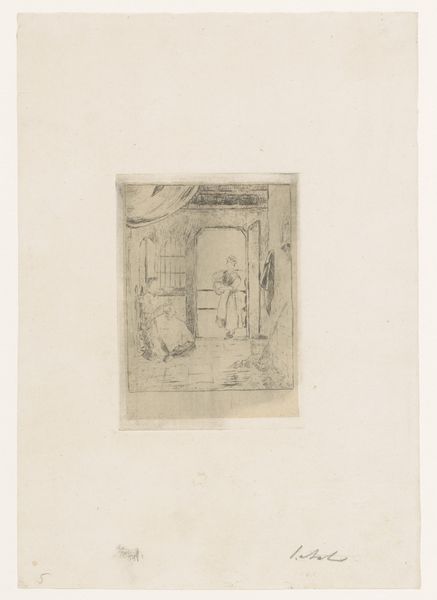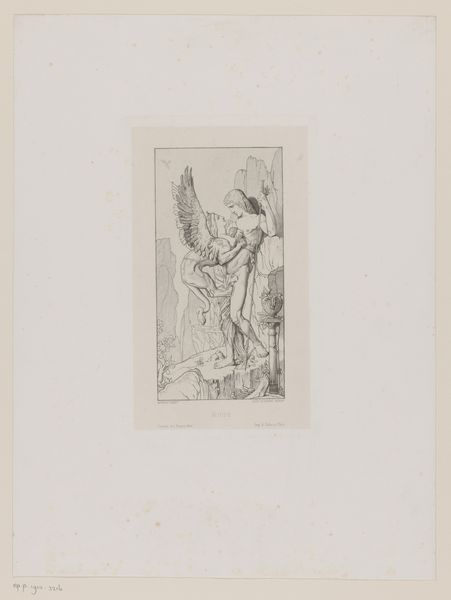
Dimensions: height 165 mm, width 127 mm
Copyright: Rijks Museum: Open Domain
Curator: Let's turn our attention to Willem de Zwart's etching, "Wassende vrouw voor een boerderij," which roughly translates to "Washing Woman in Front of a Farm," dating from around 1910 to 1920. Editor: It strikes me immediately as somber and industrious. The limited palette emphasizes texture, making the labor practically palpable. What's most interesting is its scale. The scene is contained in a tiny rectangle in the center of this huge paper; I find myself focusing intently. Curator: Precisely! The compression emphasizes the structural elements—the careful lines defining the architecture, the delicate layering that constructs form. Look how the lines almost vibrate! This, combined with its subject and the visible strokes, aligns with Impressionist values despite being monochrome. The etching technique enhances this. Editor: Indeed, that tension is visible. One cannot ignore how that textured hatching and crosshatching serves to depict both the woman’s labor, implied through her stooped pose, and the material of the farmhouse and water. Etching also feels so inherently process-oriented, a physical exertion not dissimilar to washing in the foreground! Curator: Exactly. Beyond the materiality, one observes a powerful composition. See how De Zwart uses that low horizon and careful placement of the figures? The tension he sets forth—the woman's form against that of the stark facade of the building behind—produces a very palpable sense of space, or the constraints upon it. Editor: Constraints, yes, but also continuities! Notice how De Zwart uses the organic linework of the overgrown foliage to connect with and visually balance with the scene below, bridging building and land into a unified whole. There's an embrace of craft and a focus on ordinary people reflected in the chosen medium. Curator: Your insights reveal how much this work embodies more than surface appearances, or pure formalistic values. Despite its understated presence, "Wassende vrouw voor een boerderij" uses composition and method to communicate the textures and tones of provincial life so affectingly. Editor: For me, what endures is how a laboring body informs every level of art making from the technique and materials chosen to how they reflect upon its setting in Dutch society and time. Thank you for shedding additional light onto that dynamic today.
Comments
No comments
Be the first to comment and join the conversation on the ultimate creative platform.
